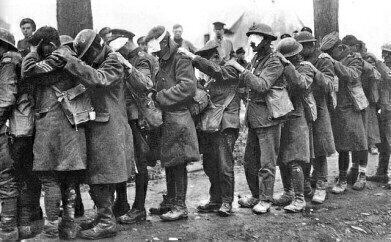GC-MS
OPCW — Making the World Safer with Chromatography
Mar 28 2016
If the prospect of bullets and explosions causing injury is frightening enough — the prospect of chemical weapons being used is truly horrific. Thankfully the use of chemical weapons in conflicts or terrorist incidents around the globe is rare. The organization that tries to stop the use of chemistry as a weapon is the OPCW.
OPCW and CWC — guardians of chemistry
The Organisation for the Prohibition of Chemical Weapons was set up in 1997 as an intergovernmental organisation — based in The Hague — to rid the world of chemical weapons using the framework of the Chemicals Weapons Convention (CWC). The CWC is a treaty that countries sign-up-to which makes it illegal to develop, produce or stockpile chemical weapons and their precursors.
One of the main elements of the OPCW is to oversee the destruction of all chemical weapons — with the OPCW estimating that 90% of the world’s declared chemical weapons have been destroyed, some 73,000 metric tonnes. 192 of the world’s states and countries have signed up to the CWC and are members of OPCW, which covers some 98% of the world’s population. Some notable exceptions who have either not signed or ratified the treaty include Israel, Egypt and North Korea.
Types of agents
There are many different chemical weapons — or more accurately chemical agents — that are known about. They main types of chemical agents can be broadly categorized into one of three main types:
- Nerve agents: The main weapons used since WWII. They affect nerve impulses in the body and are highly toxic. They usually belong to the group of organophosphorus compounds similar to insecticides. Most well-known is probably sarin, which was used in a terrorist attack on the Tokyo underground.
- Blister agents: These are chemical weapons that were used during WWI and the Iran-Iraq War in the 1980s. They exist as aerosols or liquids and are not usually deadly — their effect is to cause casualties and force the enemy into chemical suits thereby reducing the enemy’s effectiveness. An example is mustard gas.
- Choking agents: These are also weapons from WWI — with phosgene and chlorine gas used to devastating effect. Again, these agents cause fewer fatalities when compared to nerve agents with many casualties making a recovery. They cause respiration difficulties by affecting the lungs lining.
Detection and identification
The primary method of detection of chemical weapons is by chromatography as discussed in this Chromatography Today article, Analysis of Polar Nerve Agent Hydrolysis Products. Gas chromatography linked to mass spectrometry is the technique the OPCW use when they inspect a suspected factory or storage site and when they are investigating whether chemical agents have been used — most recently in the Syrian conflict.
OPCW won the Nobel peace prize in 2013 for their efforts to remove chemical weapons from the world — unfortunately, it is a fight that is still going on.
Image from Wikimedia commons
Digital Edition
Chromatography Today - Buyers' Guide 2022
October 2023
In This Edition Modern & Practical Applications - Accelerating ADC Development with Mass Spectrometry - Implementing High-Resolution Ion Mobility into Peptide Mapping Workflows Chromatogr...
View all digital editions
Events
ACS National Meeting - Fall 2024
Aug 18 2024 Denver, CO, USA
Sep 04 2024 Chiba, Tokyo, Japan
Sep 04 2024 University of Warwick, Coventry, UK
Sep 10 2024 Rockville, MD, USA
Plastics Recycling World Expo Europe
Sep 11 2024 Brussels, Belgium














